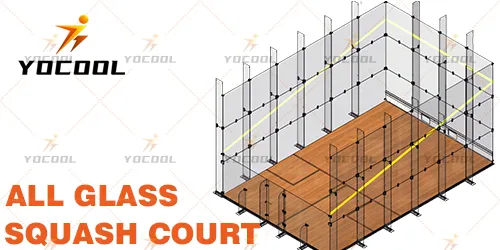

Installation of Padel Courts A Guide for Manufacturers
In recent years, padel has surged in popularity worldwide, becoming a staple sport in countries such as Spain, Mexico, and Argentina. This exponential growth has led to an increased demand for padel courts, presenting a lucrative opportunity for manufacturers specializing in the installation of padel facilities. This article serves as a comprehensive guide for manufacturers involved in the installation of padel courts, covering essential considerations, materials, and steps to ensure a successful project.
Understanding Padel
Padel is a racket sport that blends elements of tennis and squash. It is typically played in doubles on a rectangular court enclosed by walls. The official dimensions of a padel court are 20 meters long and 10 meters wide. The popularity of the sport lies in its accessibility; it is easy to learn and suitable for players of various skill levels.
Market Demand and Opportunities
With the growing enthusiasm for padel, the market demand for courts is on the rise. Manufacturers should consider various venues for installation, including sports clubs, gyms, schools, and residential communities. By partnering with these entities, manufacturers can not only expand their market reach but also contribute to the establishment of a thriving padel culture in new regions.
Key Considerations for Installation
Before embarking on the installation process, there are several critical factors manufacturers should consider
1. Site Selection The location of the padel court is paramount. Factors such as accessibility, visibility, and available space must be evaluated. Ideally, courts should be situated in areas with high foot traffic and easy access for players.
2. Court Design Padel courts can vary in design, including indoor and outdoor configurations. Manufacturers should offer customizable options to meet the preferences of clients and their specific site conditions.
3. Regulatory Compliance It is crucial to comply with local regulations and zoning laws regarding sports facility construction. Manufacturers must ensure that their installations meet safety standards and any other legal requirements.
Essential Materials and Equipment
The choice of materials used in padel courts is vital for durability, safety, and player experience. Here are the standard components

1. Court Surface The surface material affects gameplay significantly. Options include artificial grass, acrylic, or concrete. Manufacturers should ensure that the chosen material provides good traction and minimizes injury risk.
2. Walls The court's walls are integral to its design. They can be constructed from glass, which facilitates spectators’ view and offers a unique playing experience, or from solid material like concrete.
3. Lighting Proper lighting is essential for both evening play and creating an attractive environment. Manufacturers should advise clients on appropriate lighting solutions to enhance visibility and ambience.
4. Fencing Adequate fencing around the court ensures that the ball remains in play and enhances player safety. Materials can range from chain-link to specialized fencing designed for padel.
Installation Steps
The installation of a padel court involves several steps
1. Site Preparation Clearing the area of debris and leveling the ground is the first step. Proper drainage must be established to avoid water accumulation, which can damage the court over time.
2. Foundation Work A solid foundation is necessary to support the court structure. Depending on the surface material, this may involve pouring concrete or laying a sub-base.
3. Surface Installation Once the foundation is prepared, the chosen court surface can be installed. This should be done with precision to ensure a level and uniform playing area.
4. Wall and Fencing Construction After the surface is established, builders will erect the walls and fences. Ensuring durability and adherence to design specifications is critical at this stage.
5. Finishing Touches Finally, manufacturers should install lighting, nets, and signage. Proper maintenance and care instructions should also be provided to clients for long-term preservation of the court.
Conclusion
The installation of padel courts presents an exciting opportunity for manufacturers and stakeholders in the sports industry. By understanding the key considerations and steps involved, manufacturers can successfully meet market demands while contributing to the growth of this vibrant sport. With careful planning, the right materials, and expert execution, manufacturers can ensure that the installed courts are not only functional but also a point of pride for players and communities alike.
High-Performance Industrial Flooring Solutions China Paddle Tennis Court for Sale
High-Performance Industrial Flooring Solutions Durable & Cost-Effective
Homogeneous Transparent Floor – Durable & Stylish Rubber Floor Solutions
Premium Homogeneous Transparent Floor for Durable & Stylish Spaces Rubber Floor Solutions
Premium Sports Floor Solutions Durable PVC Sports Floor & Rubber Floor for Gyms
Durable Rubber Composite Floor Premium Rubber Floor & Mats Solutions